United States stamp Scott #122 is the highest denomination of the 1869 Pictorial Issue, a series that marked a turning point in American stamp design by incorporating historical figures, allegorical themes, and national symbols in place of the conventional single-portrait format.
The 90-cent value was introduced to serve as the premier high-denomination stamp of the set, intended for large foreign mailings, parcels, and official government correspondence. Unlike other pictorials that depicted events or allegories, the 90-cent issue retained the familiar format of honoring a national leader, with Abraham Lincoln chosen for the design just four years after his death.
The decision to feature Lincoln at such a high denomination underscores his status in American society during the Reconstruction period and the political emphasis on national unity after the Civil War.
Design & Print
Scott #122 was produced by the National Bank Note Company under the U.S. government’s contract for the 1869 issue, during the tenure of Postmaster General Alexander Randall. Issued in 1869, the stamp was printed in a bicolor format, with Lincoln’s portrait engraved in black surrounded by a carmine frame.
Approximately 35,000 were printed, making it one of the lowest production figures of the 1869 series, reflecting its specialized use. The portrait was adapted from an engraving by John C. McRae, based on a photograph of Lincoln, and the frame design included intricate ornamental patterns, consistent with the elaborate detail found throughout the 1869 issue.
Like the other stamps in the series, it was printed on hard wove paper and impressed with the G grill, a matrix of small points intended to embed cancellation ink deeply into the paper fibers. The denomination “90” is displayed in prominent numerals in the lower corners, while “NINETY CENTS” is engraved at the base.
Postal Usage
The 90-cent denomination was not intended for common correspondence. Instead, it was designed for use on large foreign mailings, multiple-ounce letters, parcels, and high-value registered or government documents. In international service, the base half-ounce rates to many countries typically ranged between 12 and 24 cents, making the 90-cent stamp practical only for heavier letters or large packages.
For example, a letter to Britain weighing nearly four ounces could be fully prepaid with a single 90-cent stamp under the prevailing postal treaties. Within the domestic system, it could also be used on high-value services such as parcels and government dispatches, but these applications were less frequent given the denomination’s size.
Its issuance reflected the Post Office Department’s strategy of ensuring that stamps existed for every conceivable rate, even those required only occasionally, thereby avoiding the inefficiency of handling excess payment in smaller denominations.
Identification
Scott #122 is a bicolor issue, featuring Abraham Lincoln’s portrait in black within a carmine frame. It is perforated 12, printed on hard wove paper, and carries the G grill, typically measuring about 9–13 points by 11–13 points. The portrait of Lincoln shows him facing right, with detailed line engraving capturing the features of his face and hair.
The denomination “90” is enclosed in small oval shields in the bottom corners, and the frame is filled with fine ornamental scrollwork. Its distinguishing features within the 1869 series are its combination of colors, denomination, and the subject matter, as no other issue from the set carries Lincoln’s likeness or the 90-cent value.
The presence of the grill, the sharp contrast between the black vignette and carmine frame, and the clarity of Lincoln’s engraved portrait are the primary factors in confirming its identification as Scott #122. This combination of technical engraving and design complexity makes it one of the most intricate products of the 1869 issue.



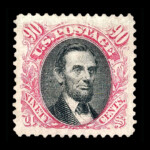
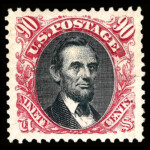
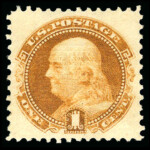
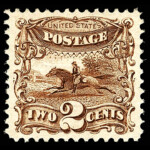
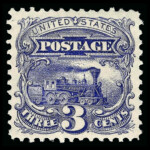
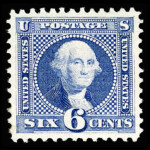
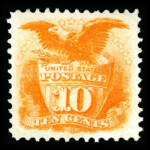

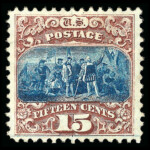
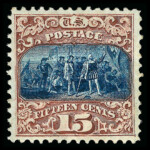

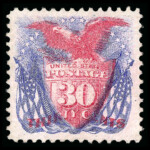





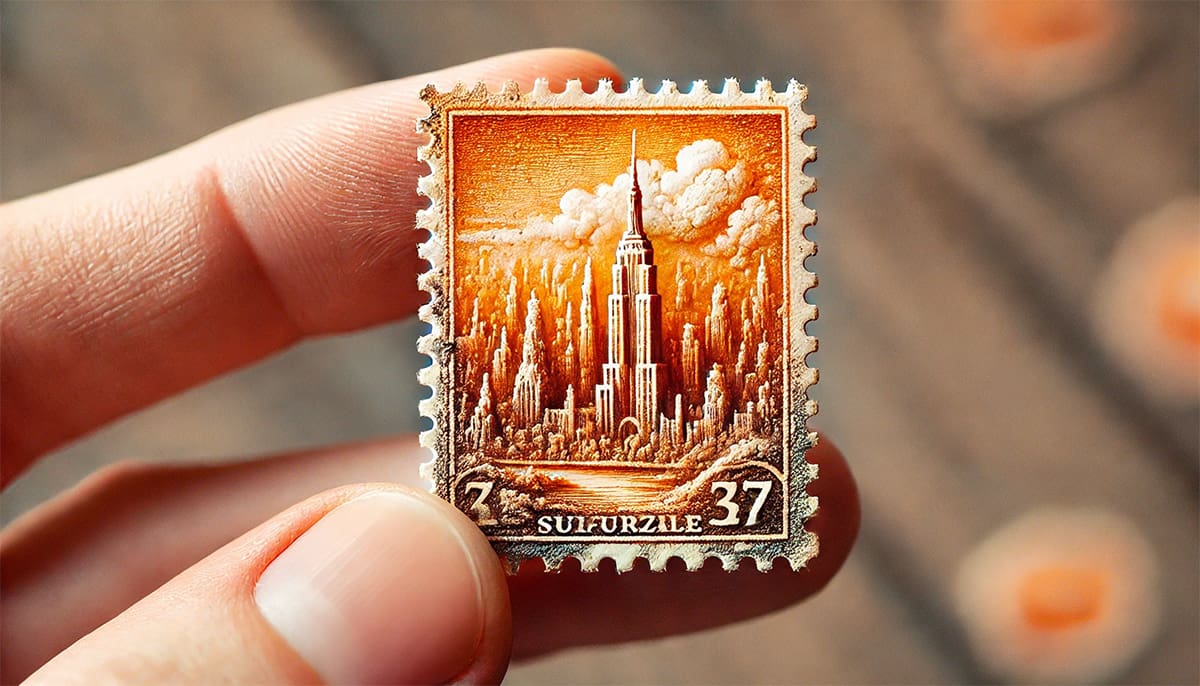







Ask A Question Or Leave A Comment